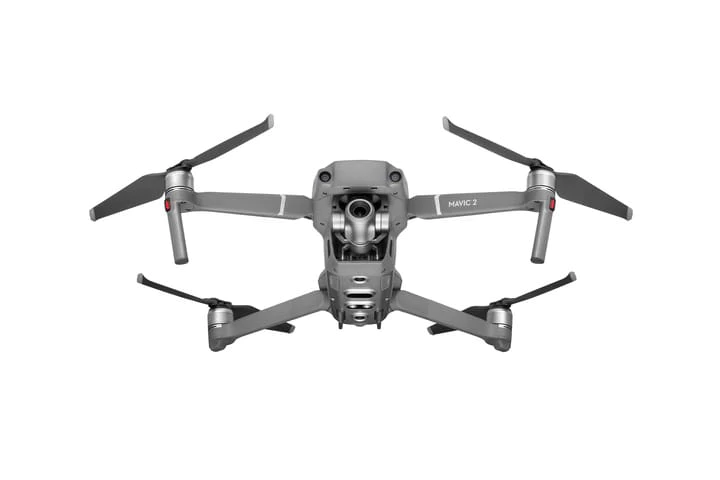
Products
DJI Mavic Mini v DJI Mavic 2 Pro v DJI Mavic 2 Zoom v DJI Mavic Air
An in-depth guide to compare the differences between the new DJI Mavic Mini and the DJI Mavic 2 Pro, DJI Mavic 2 Zoom and the DJI Mavic Air drones. ... Read More
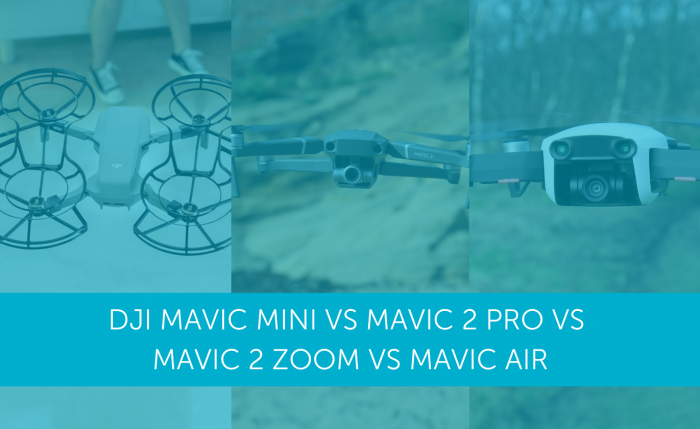
The much-anticipated DJI Mavic Mini is here and it looks set to be a big hitter!
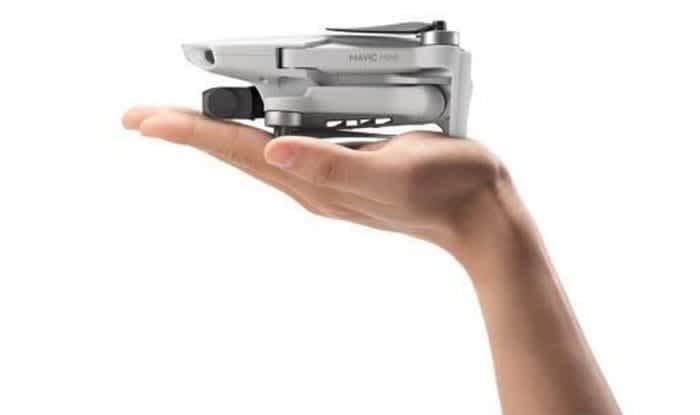
Look at how small the DJI Mavic Mini is!
So, with this ultralight drone becoming the newest member of the popular Mavic family, how does it compare to its older siblings - namely the Mavic 2 Pro, Mavic 2 Zoom and the Mavic Air?
Mavic-Mini-2-3-700x496.jpg
IMG_4601-1-700x467.jpg
Maviciasir-700x418.jpg
Heliguy Insider takes a look at their features and key specifications to help you decide which is the best to meet your needs.
DJI Mavic Mini v DJI Mavic 2 Pro v DJI Mavic 2 Zoom v DJI Mavic Air - Key Specifications
First of all, let's take a look at the tale of the tape with some of the key specifications.
Mavic Mini | Mavic 2 Pro | Mavic 2 Zoom | Mavic Air | |
Take-off Weight | 249g | 907g | 905g | 403g |
Dimensions (LxWxH) | Folded: 140mm x 82mm x 57mm Unfolded: 160mm x 202mm x 55mm | Folded: 214mm x 91mm x 84mm Unfolded: 322mm x 242mm x 84mm | Folded: 214mm x 91mm x 84mm Unfolded: 322mm x 242mm x 84mm | Folded: 168mm x 83mm x 49mm Unfolded: 168mm x 184mm x 64mm |
Max Speed (S-Mode) | 46.8kph / 29mph | 72kph / 44.7mph | 72kph / 44.7mph | 68.4kph / 42.5mph |
Max Flight Time | 30 minutes | 31 minutes | 31 minutes | 21 minutes |
Camera | 1/2.3" CMOS 12MP | 1" CMOS 20MP | 1/2.3" CMOS 12MP | 1/2,3" CMOS 12MP |
Internal Storage | N/A | 8GB | 8GB | 8GB |
Sensing | Downward | Omnidirectional | Omnidirectional | Forwards/backwards/downwards |
Price | £369 | £1,349 | £1,099 | £769 |
DJI Mavic Mini v DJI Mavic 2 Pro v DJI Mavic 2 Zoom v DJI Mavic Air - Appearance
Let's not beat around the bush - the most significant thing about the Mavic Mini compared to its predecessors is its appearance, or more specifically, its weight.
Now, the Mavic Series of drones has always been known for being light and portable, but the Mavic Mini takes this to another level.
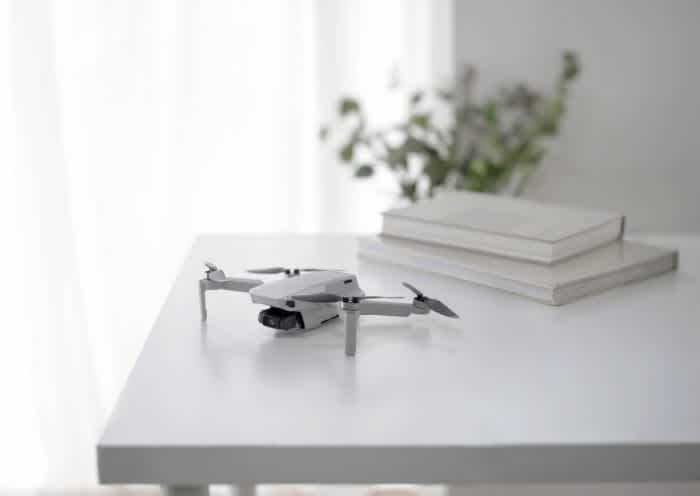
The DJI Mavic Mini weighs 249g.
The Mini is almost four times lighter than the Mavic 2 Pro and Zoom - 249g compared to 907g and 905g respectively, while it is 154g lighter than the Mavic Air (403g).
It means that this miniature drone is the same weight as an average smartphone (the iPhone 11 Pro tips the scales at 188g to give some perspective), but most significantly, it ducks just under the 250g drone registration limit. This means that it falls into the safest and lightest category of drones and does not need to be registered.

The DJI Mavic Mini does not need to be registered with the UK and USA Governments.
This is a huge plus point and opens up a lot of possibilities for consumers and commercial users alike.
All four Mavics are foldable quadcopters, making them very easy to transport. But weighing just 249g, the Mavic Mini's size means it could be carried in your pocket or your handbag and could easily become another accessory as part of your daytime routine - along with your smartphone and purse/wallet.
In terms of appearance, the Mavic Mini is almost identical to the Mavic 2 iterations.
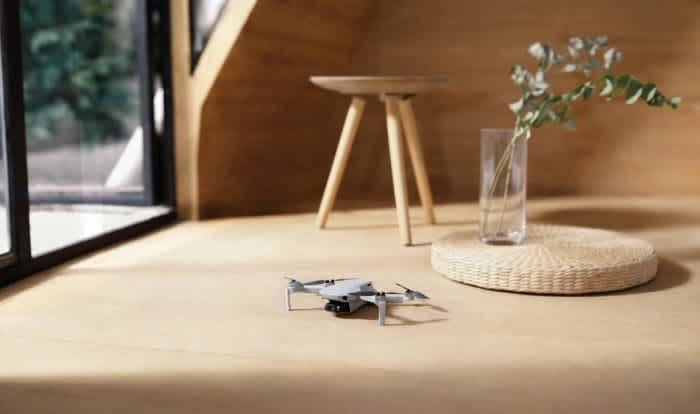
The DJI Mavic Mini...
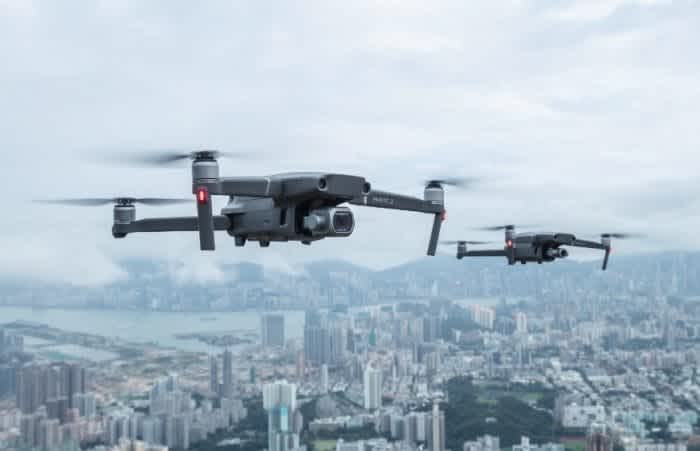
...is a shrunken version of the DJI Mavic 2 Pro and DJI Mavic 2 Zoom.
All three are very impressive looking models, especially when compared to the Mavic Air which looks a tad dated now.
Certainly, the Mavic Air has a vastly different look to the other three, with a more rounded shell which looks bulkier and harder than the Mavic 2s and the Mini.
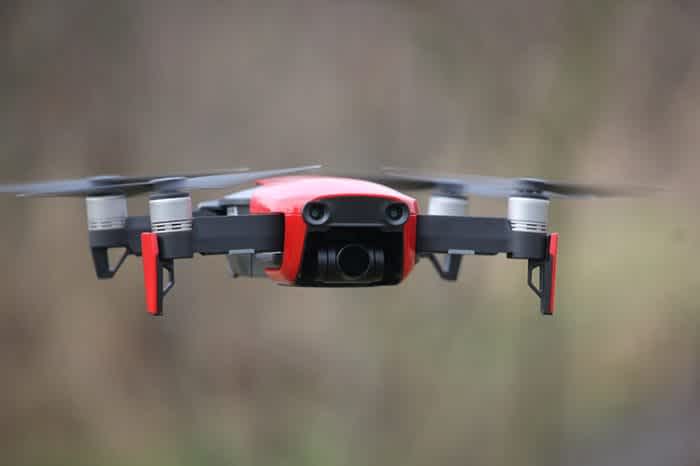
The DJI Mavic Air.
DJI Mavic Mini v DJI Mavic 2 Pro v DJI Mavic 2 Zoom v DJI Mavic Air - Price
One of the most important strings to the Mavic Mini's bow is its price. At £369 for the standard package or £459 for the Combo, it is a low-cost entry to the market, especially for its capabilities and the fact it tips the scales at only 249g. It is ground-breaking in many respects and is a great drone, especially for consumers.
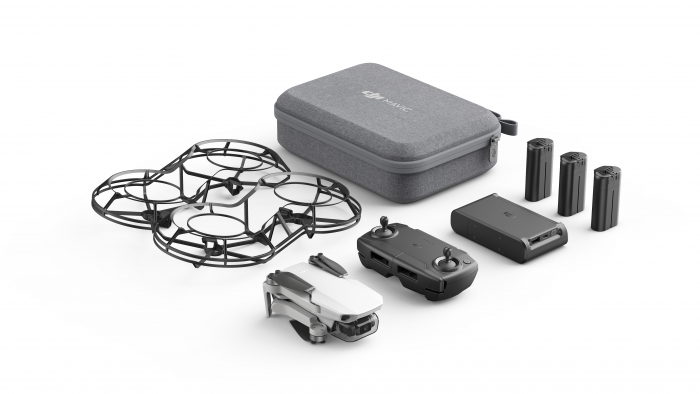
The DJI Mavic Mini Combo.
For a new release drone it is very reasonably priced, especially compared to the Mavic 2 Pro (£1,349 standard / £1,779 with Smart Controller / £1,798 with DJI Goggles Racing Edition); Mavic 2 Zoom (£1,099 standard / £1,559 with Smart Controller / £1,548 with RE Goggles), and the Mavic Air (£769 standard / £949 Fly More Combo) - all of which have been out for a while.
DJI Mavic Mini v DJI Mavic 2 Pro v DJI Mavic 2 Zoom v DJI Mavic Air - Camera
One of the most important considerations when buying a drone of this type is the camera.
When it comes to pure quality, there's only one winner - the DJI Mavic 2 Pro.
The Mavic 2 Pro L1D-20c Hasselblad camera has a one-inch CMOS sensor capable of taking truly stunning 20MP images.
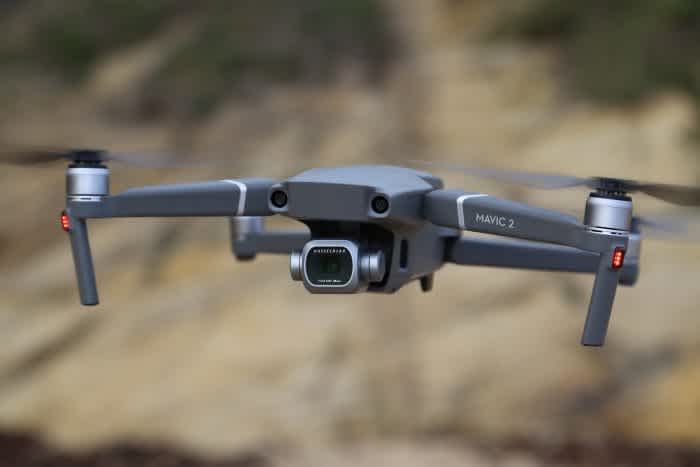
The DJI Mavic 2 Pro has a Hasselblad camera.
This is compared to the 1/2.3 CMOS sensors of the Mavic 2 Zoom, Mavic Mini and Mavic Air, which can all capture 12MP pictures.
However, the Mavic 2 Zoom features a 24-48 mm Optical Zoom Camera. The 4x zoom with a 2x optical zoom allows you to get close to the subject without from a safe distance.
The lens options allow a varied perspective giving a cinematic effect to the available shots. The Mavic 2 Zoom utilises a hybrid auto-focus that’s up to 40% faster than previous iterations.
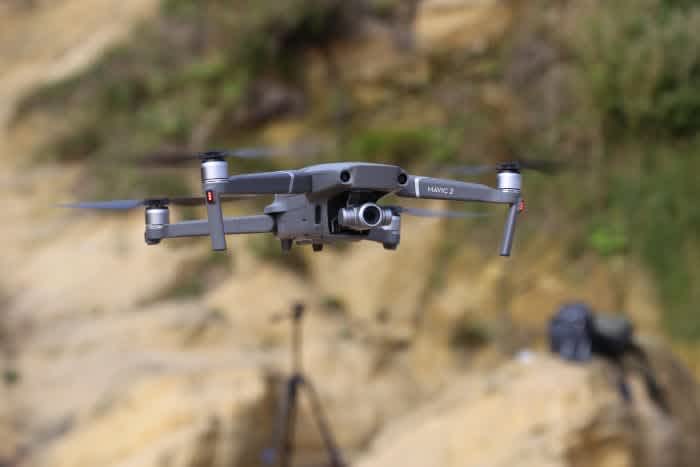
The Mavic 2 Zoom.
In terms of the ISO range, the Mavic 2 Pro is unrivalled, with photos stretching from 100-3200 (auto) and from 100 to a massive 12,800 in manual. In contrast, the Mavic Mini, Mavic 2 Zoom and the Mavic Air have identical ISO photographic capabilities, ranging from 100-3200 in auto and 100-3200 in manual.
When it comes to aperture, again, there's only one winner - with the Mavic 2 Pro delivering a f/2.8-f/11 adjustable aperture, which delivers outstanding image quality both in high and low-light environments.
The Mavic 2 Zoom has an aperture range of f2.8-f3.8, while the Mavic Mini and Mavic Air have a f2.8 aperture.
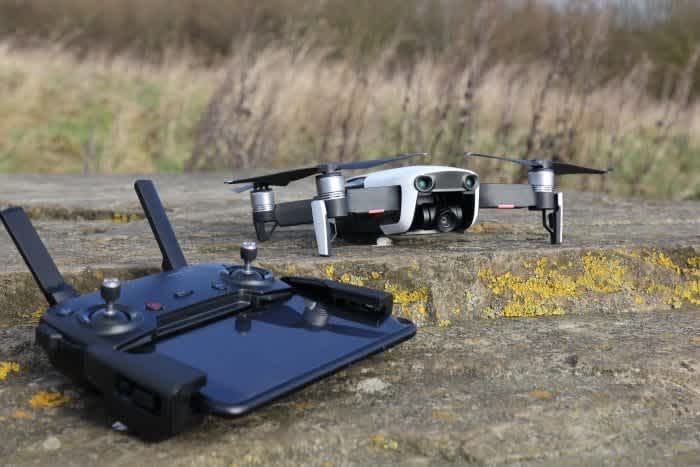
The DJI Mavic Air.
There is also a difference between the drones when it comes to still image size. The Mavic 2 Pro is able to capture 5472 x 3648, while the Mavic 2 Zoom is capable of 4000 x 3000. As for the Mavic Mini and Mavic Air, their still image sizes are 4056 x 3040 (4:3) and 4056 x 2280 (16.9).
The Mavic Mini is limited in its photography modes, being able to only capture JPGs, while the Mavic 2 Pro, Mavic 2 Zoom and the Mavic Air can do JPGs and DNG (Raw).
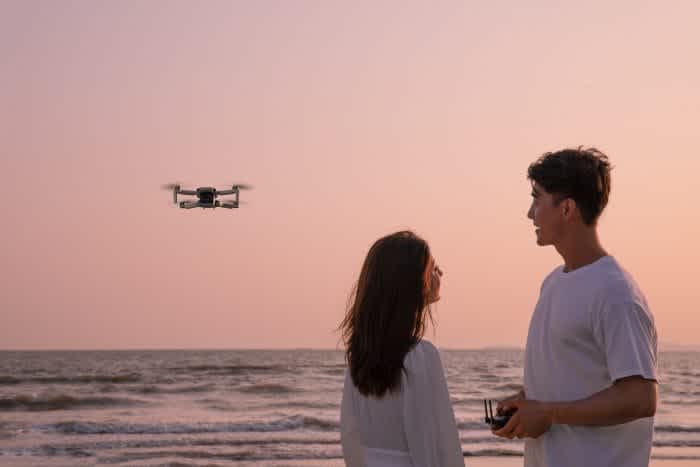
The DJI Mavic Mini.
When it comes to video, the impressive Mavic 2 Pro can shoot Full HD at 120p, 4K at 30p and 2.7K at 60p, and supports a 10-bit Dlog-M colour profile that yields higher dynamic range for more flexibility in the grading room.
The other key area in which the Mavic 2 Pro stands out is the supported 4K 10-bit HDR video. This helps videos have the right colour tones, as well as a bright colour contrasts.
The Mavic 2 Zoom can capture 4K video at 30p, 2.7K at 60p and Full HD at 120p, while the Mavic Air is capable of 4k Ultra HD at 30p, 2.7K at 60p, Full HD at 120p, and HD at 120p.

You can capture awesome footage with the Mavic Series of drones.
The Mavic Mini has a 2.7K max video resolution at 30p, as well as Full HD at 60p. It tops out at 40Mbps, while the other three can achieve 100Mbps.
The Mavic Mini captures MP4, while the Mavic 2 Pro, Mavic 2 Zoom and the Mavic Air do MP4s and MOVs.
All four Mavic drones benefit from a three-axis gimbal, ensuring smooth footage/images. This is very impressive for the Mavic Mini, considering its size.
DJI Mavic Mini v DJI Mavic 2 Pro v DJI Mavic 2 Zoom v DJI Mavic Air - Intelligent Features and Photography Modes
Mavic Mini pilots can take advantage of a range of intelligent features. However, the drone does not have object tracking like the other three Mavics in this review.
The Mavic Mini benefits from QuickShot modes, which include Dronie, Circle, Helix, and Rocket, to help you capture great shots.
To help you control the drone and take pictures and videos, the Mavic Mini has CineSmooth Mode - allowing you to slow down the drone's flight speed and movements for an added layer of precision and stability - as well as water detection when landing.
Meanwhile, interval mode gives you more time to prepare for a selfie.
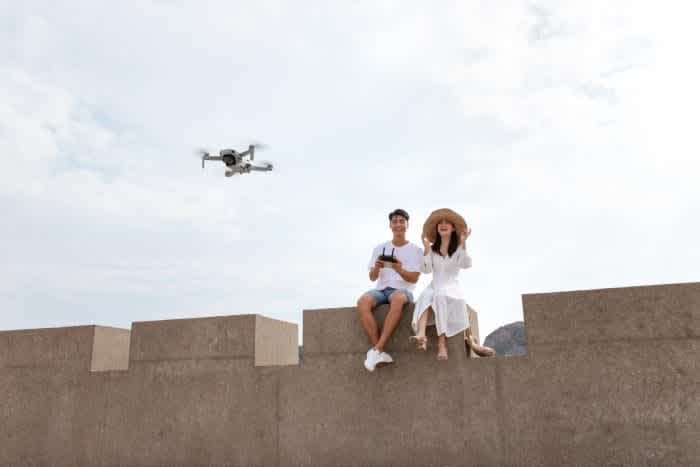
The DJI Mavic Mini.
But the Mavic Mini isn't the only drone in the Mavic family to pack a host of smart features.
The Mavic 2 Pro and Mavic 2 Zoom have an array of intelligent options, such as QuickShots, as well as:
HyperLapse: The aircraft shoots stable aerial shots and processes them automatically, enabling you to create professional-looking timelapses with a simple tap of a button, which you can share to social media immediately
HyperLight: A low-light setting designed to enhance your images while reducing noise significantly.
ActiveTrack 2.0: Take your tracking to another level, with features such as precise recognition, high-speed tracking and obstacle sensing.
Panoramas: The Mavic 2 supports four panorama modes including Sphere, 180°, Horizontal, and Vertical.
Intuitive Shooting Modes: These include Point of Interest 2.0, Waypoint 2.0 and Dolly Zoom (Mavic 2 Zoom only).
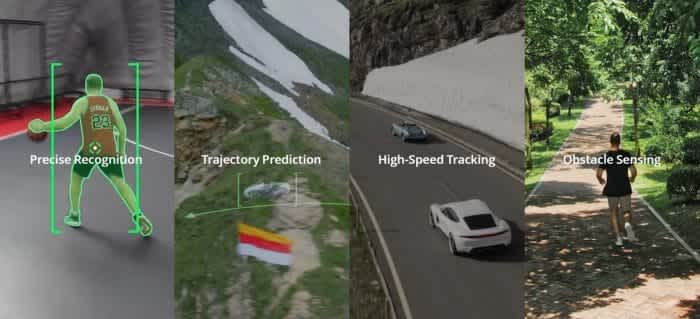
The ActiveTrack 2.0 features on the DJI Mavic 2 Pro and Zoom.
Meanwhile, the Mavic Air benefits from ActiveTrack and QuickShots. It also has SmartCapture, which allows you to launch and control your drone with hand gestures, and TapFly, which lets you fly wherever you tap on your mobile device screen.

TapFly is a cool feature of the DJI Mavic Air.
DJI Mavic Mini v DJI Mavic 2 Pro v DJI Mavic 2 Zoom v DJI Mavic Air - Performance
So, how do these drones compare when it comes to performance?
First of all - speed. The Mavic Mini can max out at 46.8kph/29mph in S-Mode. This means that it is significantly slower than the Mavic 2 Pro and Mavic 2 Zoom (both 72kph/44.7mph in S-Mode), as well as the Mavic Air (68.4kph/42.5mph in S-Mode).
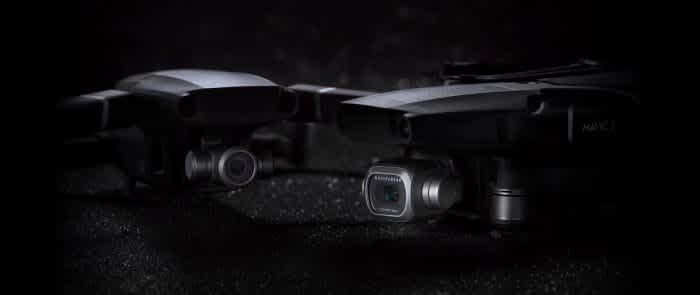
The DJI Mavic 2 Zoom and Pro.
But while the Mavic Mini isn't quite as nippy as its Mavic siblings, it certainly packs a punch when it comes to endurance. This impressive mini drone can muster half an hour in the air. This smashes the Mavic Air out of the park, which can fly for 21 minutes, and is just one minute less than the Mavic 2 Pro and Zoom. That is seriously impressive.
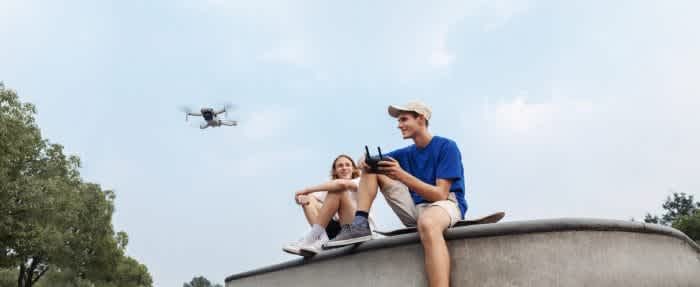
The DJI Mavic Mini.
The Mavic 2 Pro, Mavic 2 Zoom and Mavic Air all have 8GB internal storage, and support microSD cards, while the Mavic Mini only supports microSD cards.
The Mavic 2 Pro, Mavic 2 Zoom and the Mavic Air all utilise the DJI GO 4 app, while the Mavic Mini has the new DJI Fly app, which boasts a cleaner and new user-friendly UI (user interface) design, a flight tutorial and a new editor with creator templates which lets you edit videos and quickly create and share your videos.
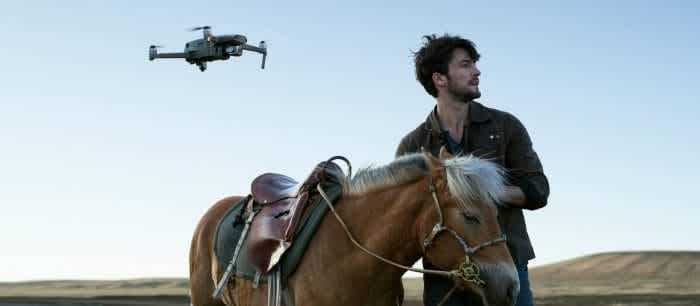
The Mavic 2 Pro, Zoom and Air utilise the DJI GO 4 app.
In terms of transmission, the Mavic Mini is very capable, achieving up to 4km HD video transmission - for clarity, 4km relates to American models, while the distance is up to 2km in Europe (CE compliant). In contrast, the Mavic 2 Pro and the Mavic 2 Zoom have 1080p from 8km, while the Mavic Air achieves 720p from 4km.
When it comes to safety and flight sensing systems, the Mavic 2 Zoom and Mavic 2 Pro have comprehensive omnidirectional obstacle sensing (ie, left/right, up/down, and forward/backward).
The Mavic Air has three-way directional environment sensing (forward, backward and downward), while the Mavic Mini has downward sensing, which helps to ensure safe and stable hovering. But while the Mini doesn't have as comprehensive a sensing system as the others, don't forget that at only 249 grams, it is in the safest and lightest weight category of drones.
Also, as an added bonus, the Mavic Mini can fly with a 360° prop guard, which offers full protection to your propellers.
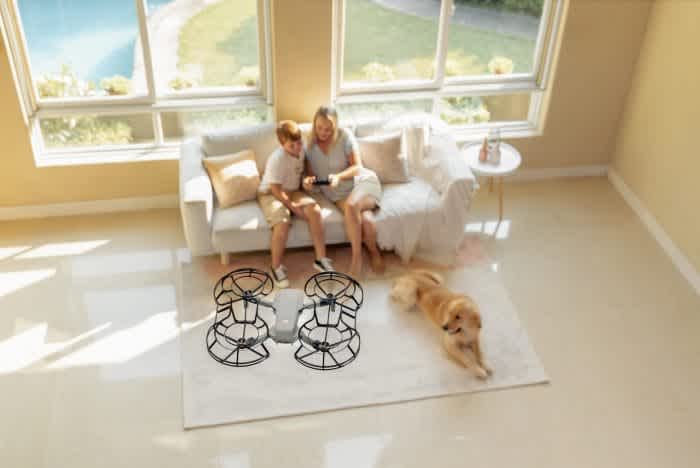
The 360° prop guards on the DJI Mavic Mini.
Prop guards are available for the Mavic 2 Zoom, Mavic 2 Pro and the Mavic Air, but they don't offer 360° propeller protection, as this photo shows.
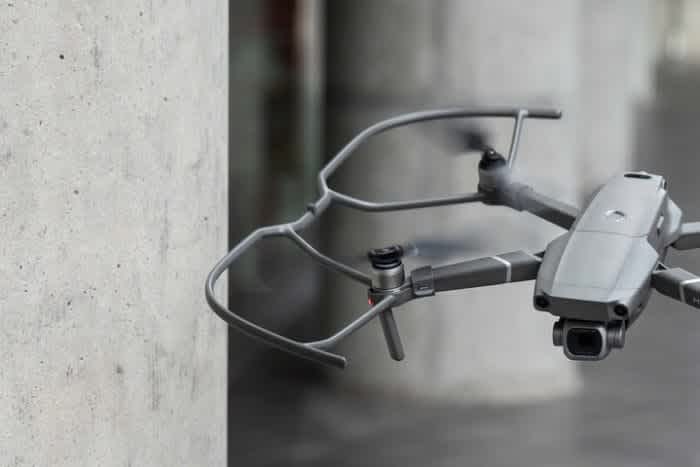
The prop guards for the DJI Mavic 2 drones.
DJI Mavic Mini v DJI Mavic 2 Pro v DJI Mavic 2 Zoom v DJI Mavic Air - Conclusion
Weighing only 249g, costing a few hundred pounds and packing many of the features of its predecessors, the DJI Mavic Mini is something of a revelation!
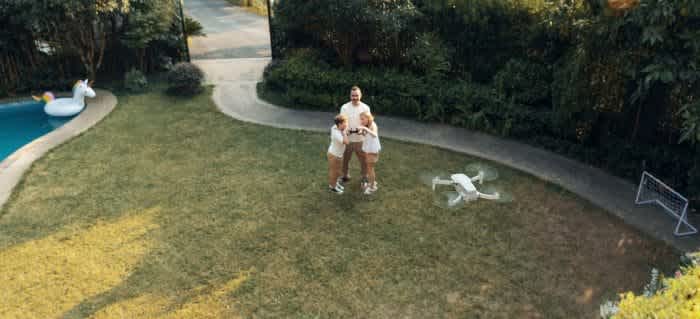
The DJI Mavic Mini.
This micro drone certainly has a range of benefits, including its 30 minute flight time and the fact that you don't need to register it with the UK or USA governments which will be seen as a bonus by many. It is also incredible that DJI has managed to pack so many features and smart technology into such a small drone.
Okay, it doesn't quite have the photographic/video capabilities of the Mavic 2 Pro, for instance, or it doesn't have ActiveTrack or SmartCapture, but it is an incredible product nonetheless and takes innovation to another level.
While aimed at the consumer market, the Mavic Mini could be used by commercial pilots for the likes of internal inspection and stealth missions.
It might not be for everyone, and it does have its limitations, but the Mavic Mini is a seriously cool product which has enough about it to justify a purchase - whether you are new to the drone game or a seasoned pro.
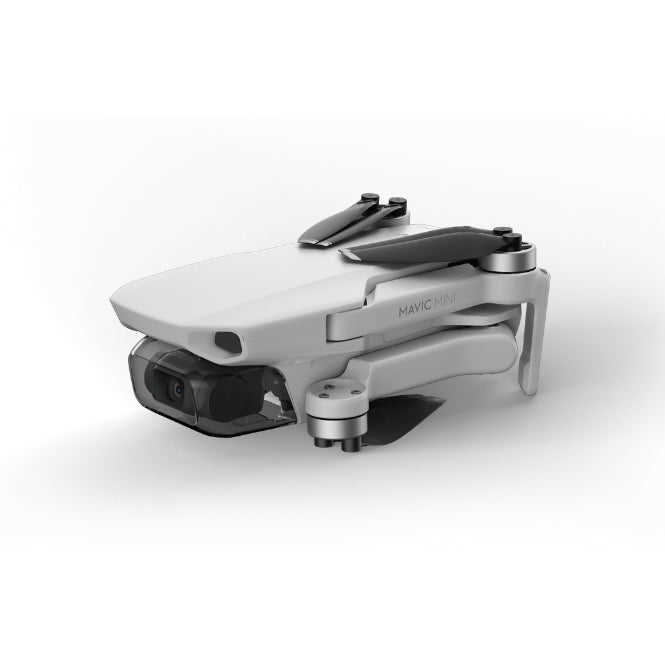
Is it for you? Well, the Mavic Mini is the smallest, lightest, and most portable drone from the DJI Mavic series and is perfect for anyone who is looking for an extremely convenient, easy-to-use drone with incredibly simple flight operation.
As for the Mavic 2 range, these two drones combine signature DJI technology and innovation for users with professional aerial photography in mind.
Meanwhile, the Mavic Air offers an excellent flight performance for beginners and experienced drone users.
